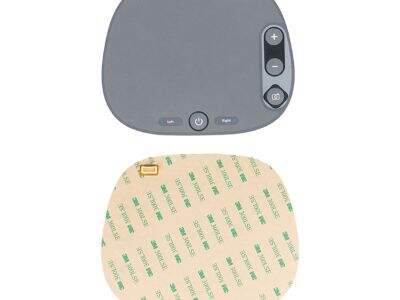Did you ever wonder how temperature and humidity affect the way a flex sensor behaves? In this article, we will discuss the manners in which these environmental variables affect our flex sensors and what we can do to make them work better in various environments. By understanding temperature and humidity we can aid flex sensor to return better, consistent results.
How Do Flex Sensors React to Temperature?
The temperature can actually affect the output of the flex sensors. And the sensor’s readings can change between hot and cold. Sometimes, for example if it gets hot out, the sensor may become more sensitive and higher numbers will be displayed. But if it cools off, the sensor may not have as strong of a response and display lower numbers.
To address this, we need to consider its working temperature range when using the cost of flex sensor. We can ensure it gives us the right reading no matter what the temperature is by calibrating the sensor to specific temperatures.
Limitations of Flex Sensor Accuracy Due to Humidity
How accurate flex sensors are can even be altered by humidity. The sensor may not function as well when in places where the humidity is higher, and readings might also be wrong. This is because humidity in the air can alter the way the sensor functions.
If you want to keep flex sensor working better in a humid environment, we need to adjust sensibly. We just have to adjust the sensor settings to reflect humidity, and we can keep it accurate and reliable even when it’s moist.
Modifying Flex Sensors for Other Situations
Flex sensors are usable in many areas where resistance to temperature token humidity is required. We need to change their settings that will make them work well in shifting situations.
If the temperature increases too fast, the sensor may register higher values than are actually occurring. We may then be better able to maintain the sensor to keep it from reading incorrectly if this is something that can be changed; in other words, avoid reading errors.
Temperature and Humidity Control
In order to maintain the proper temperature and humidity, we need to keep an eye on things so that we can check these conditions frequently. By checking the temperature and humidity where the sensor is located, we can be prepared for any changes and adjust the settings if necessary.
Also, we should ensure that the sensor is ventilated well and insulated well to avoid overheating or being corroded in extreme temperature or humidity. Sheltering the sensor from these influences can extend its life and improve its performance.
Enhancement of Flex Sensor Stability
In summary, temperature and humidity can significantly impact the performance of flex sensors. We can adjust the settings - how these factors work - so that we achieve more accurate and reliable sensors in different conditions.'


